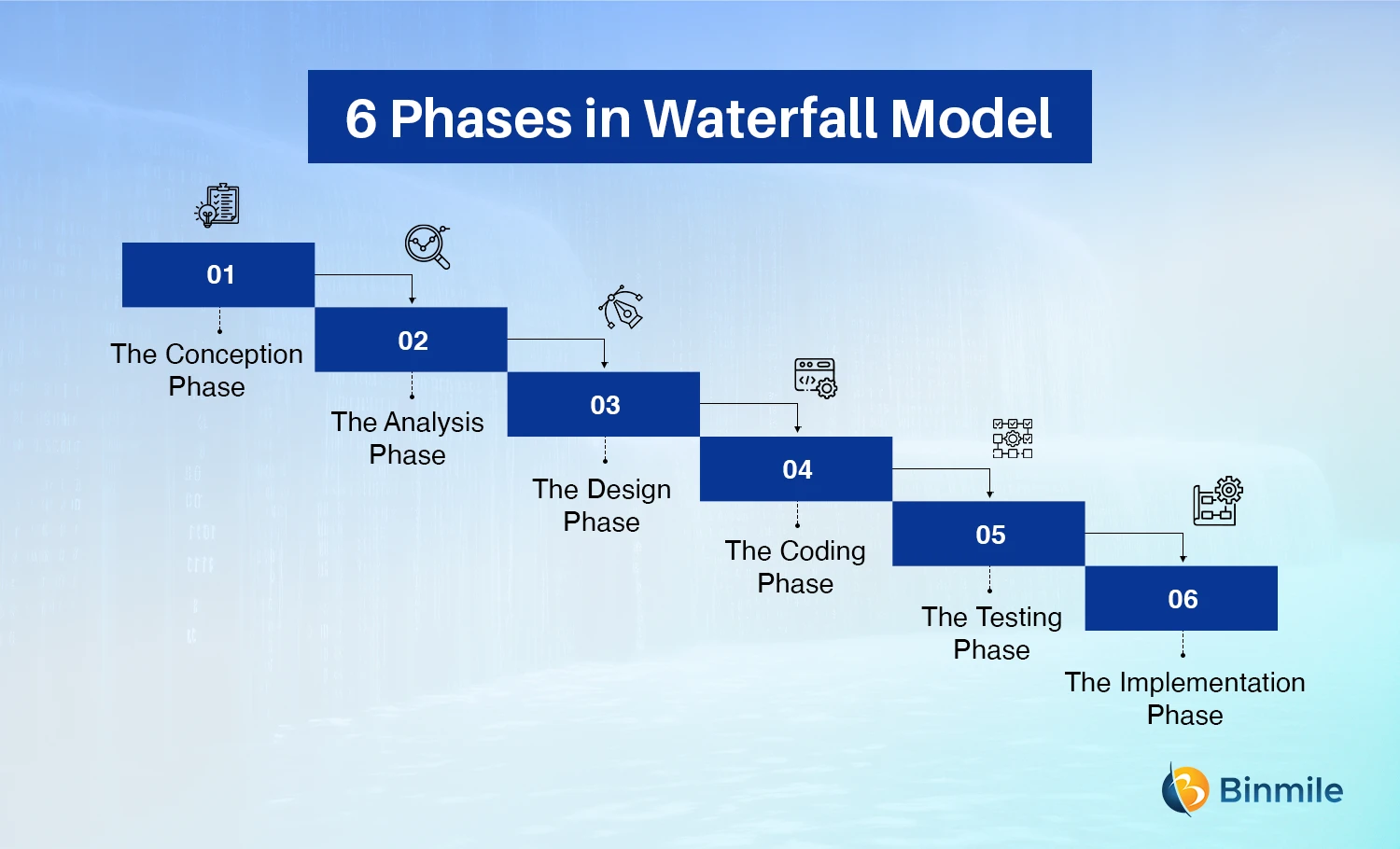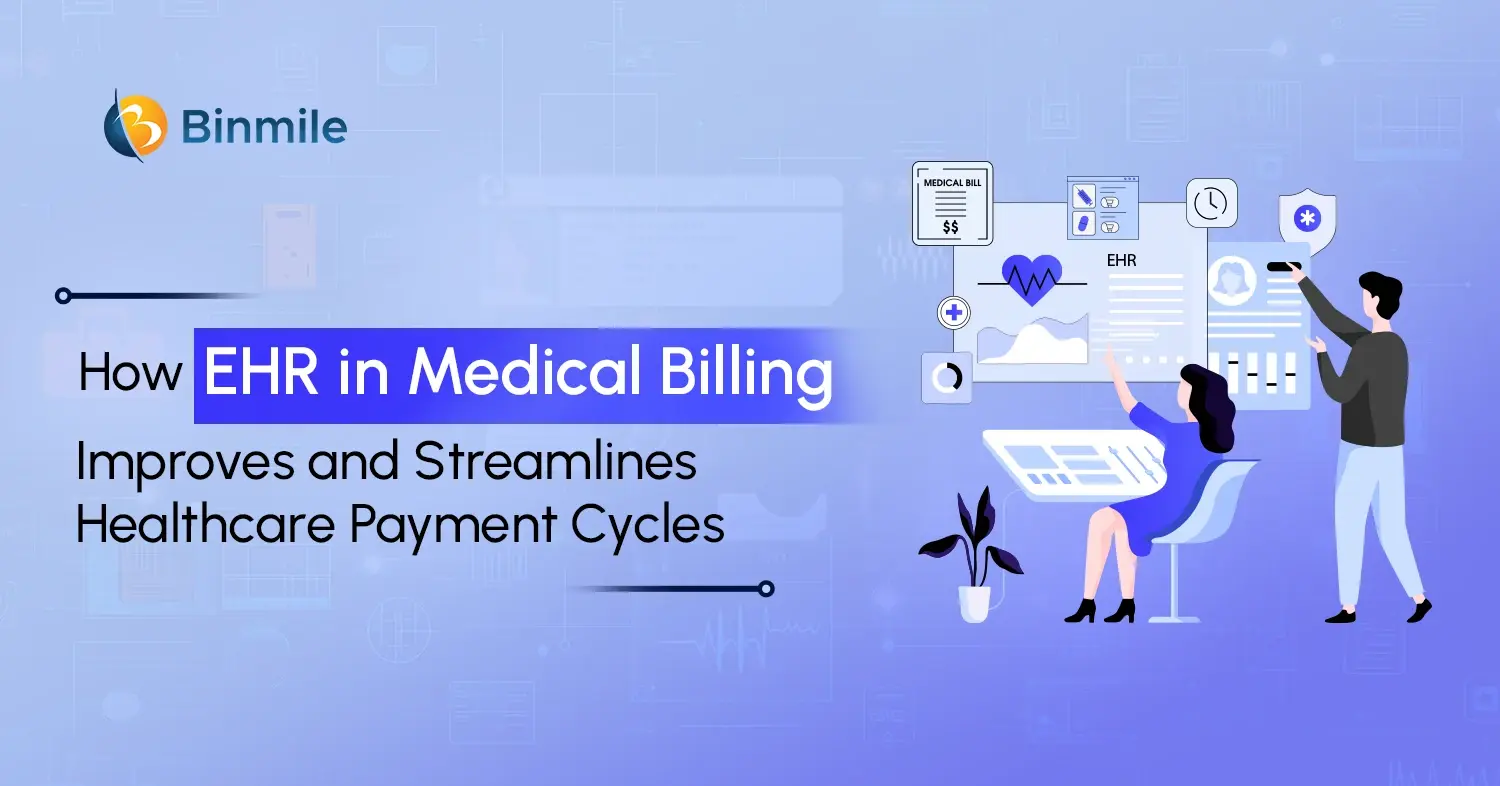- Agile Development Methodology
- agile development vs waterfall
- Core Principles of Agile Development Methodology
- Development Methodology
- Drawbacks of Agile Development Methodology
- Drawbacks of Water Development Methodology
- Phases of the Waterfall Development Methodology
- project management waterfall vs agile
- Usefulness of Agile Development Methodology
- Usefulness of Waterfall Development Methodology
- Waterfall Development Methodology
- waterfall method
- Waterfall or Agile
When initiating a software development project, the selection of the project methodology becomes crucial, often leading to debates due to the involvement of two widely recognized approaches. Simply put, the development methodology ensures how to plan the project tasks and their execution. Agile and waterfall, the two predominant software development methods, are extensively used in software development services and project management. According to the Project Management Institute (PMI), 71% of organizations use Agile in some capacity, while Waterfall is still widely used in industries like finance and construction where structured processes are necessary.
What’s the key difference between agile vs waterfall development methodlogies? The main distinction lies in how we sequence project activities. Waterfall follows a linear sequence, while Agile focuses on iterative, incremental progress. Each methodology offers distinct advantages and challenges, making the choice highly dependent on the project’s nature and requirements. In this blog, we will explore Agile vs. Waterfall development methodologies, their benefits, drawbacks, real-world applications, and common challenges. Let’s dive in!
Key Industry Trends
- According to Gartner by 2027, 90% of organizations are expected to adopt Agile practices in some form.
- 74% of companies report Agile has improved their software quality as per VersionOne State of Agile report.
- A study conducted by PWC have states that, Agile projects are 28% more successful than traditional Waterfall projects.
- Waterfall projects have a success rate of 49%, reflecting challenges in adapting to changes during the project lifecycle while Agile projects have a success rate of 64%, attributed to their flexibility and iterative nature.
What is Agile Development Methodology?
One way to sum up the key distinction between the agile and waterfall methodologies is to say that the former prioritizes planning in advance, and the latter prioritizes flexibility and stakeholder input. Simply put, agile methodology is all about delivering small pieces of software rapidly to enhance customer satisfaction.
Many different ways exist for conducting agile development, but they all share certain commonalities. Scrum and Kanban are two of the most well-known Agile systems. In fact, they both work on their own, which keeps the focus on the customer and lets them use the resources they have to track the task’s progress at each step.
Taking all factors into account, the agile process emphasizes teamwork and swift task completion. In agile software development services, a big job is broken down into smaller, easier-to-handle tasks. Also, in agile development, we call the ‘time-boxed’ stages ‘sprints,’ and they usually have a duration of only a couple of weeks. After each iteration or sprint, we incorporate the lessons learned into the creation of the next iteration.
Popular Agile Frameworks
- Scrum: Uses short, time-boxed sprints for quick releases.
- Kanban: Focuses on workflow visualization to manage ongoing tasks.
- Extreme Programming (XP): Emphasizes high-quality coding with continuous testing.

Core Principles of Agile Development Methodology
- Adaptability: Agile development underlines how important it is to change design, architecture, requirements, and outputs along the way.
- Customer Involvement – This necessitates close collaboration between the customer and the development team since the design and deliverable units change.
- Lean development: It focuses on getting the end product as simple as possible. If two steps instead of five give the same output, agile development will build the software that way.
- Collaboration: As was previously noted, teamwork is key to the agile methodology. Teams should carry the responsibility to continuously assess their own performance and make adjustments to the agile project as they go. Given that two minds are always better than one, it’s no surprise that Extreme Programming encourages its writers to collaborate.
- Time: Time is handled differently in agile development, with work being broken down into minute-long increments. Here, we are now talking about those “time-boxed sprints” we mentioned before.
- Sustainability: Agile development emphasizes maintaining a sustainable pace over the course of the project, rather than prioritizing speed at the expense of completion.
- Testing: Agile approaches necessitate testing at each and every stage of the project, in contrast to waterfall methods where testing is done at the end.
Benefits of Agile Development Methodology
The success of the project and the happiness of the client are at the heart of agile development’s advantages. Adapting to the agile method can be challenging, but with the support of the right agile consulting services, the effort involved may be well worth it.
- Stakeholder Involvement: Adopting an agile methodology facilitates and promotes constant communication between the project’s development team and the client.
- Flexibility: In an agile framework, you can change deliverables based on the goals of the stakeholders. In simpler terms, agile allows customers to utilize unfinished software versions before the release of the final, completed version.
- Adaptability: This is one of the main benefits of rapid development that we’ve already talked about. As users learn more about what they want from the software, development can change sprint goals.
- User-Friendly Product: When utilizing the agile method, the team tends to produce higher quality products that are easier to use because they incorporate feedback from users after each sprint.
Drawbacks Involved in Agile Development Methodology
Like any other development method, agile may not work well in some situations or with some teams. These extra problems can be solved with planning and a product development services team that works hard.
- Devoted Commitment: Dedicated team members are essential to the success of an agile development project, something that isn’t the case with the waterfall method. This might be difficult for firms doing a lot of development at once. At the same time, it could be difficult for developers to work alone.
- Potential for Longer Deadlines: Although time-boxed sprints enable planning, there is always the possibility that the team will not finish some deliverables by the deadline. It’s an obvious fact of building anything. Extending the project to accommodate additional sprints can result in increased costs for the customer.
- Communication: Because of the emphasis on teamwork inherent in the agile development technique, open lines of communication are essential for the successful implementation of any such endeavor.
Popular Example of Agile Development Methodology
- Netflix uses Agile methodologies to continuously improve its streaming platform, rolling out weekly updates based on user feedback and data analytics.
- Amazon implements Agile to enhance its e-commerce platform, allowing for rapid deployment of new features and personalized recommendations.
- Microsoft also leverages Agile in its Azure cloud services, ensuring continuous integration and development to improve performance and security.
- Spotify, on the other hand, employs Agile in its “squad” model, enabling cross-functional teams to work independently on various features like personalized playlists and user engagement tools.
Binmile’s Success Story: Discover how We Helped Spotify Optimize their Onboarding Process
What is Waterfall Development Methodology?
The waterfall technique is a way of making software that is very sequential and has six different steps. The team must complete each step in a specific order. They cannot start the subsequent step without finishing the preceding one. To be more precise, it is the most desirable and traditional way to manage a project. Every participant has their set roles and none of the sequential phases require any changes. For detailed and lengthy projects that require a single timeline, this methodology proves to be the best.
To apprehend more, let’s understand the 6 phases!
Phases of the Waterfall Model

- The Conception Phase: During the first part, “conception,” developers come up with ideas and decide what they want to build and why they want to build. As a matter of fact, this lays the groundwork for the project.
- The Analysis Phase: The next step is the start-up and research setting. Here, developers gather and document all the system and software specifications for their software development job.
- The Design Phase: Moving on, as software developers move into the planning phase, they actively figure out how the software is supposed to work and which parts need to be coded. Basically, they estimate what hardware they’ll be using and what’ll be the user interface.
- The Coding Phase: Post the design phase, the building and coding process initiates. Developers start writing code for each part of the software and keep testing and integrating it based on the software architecture they assessed in the design phase.
- The Testing Phase: Once the building process falls in line, the system is put through a lot of testing. The methods include testing the whole system, testing with users, and most importantly testing for bugs. This way, it is easy to find problems and fix them.
- The Implementation Phase: The last step is to where to put the plan into action. We either deliver the finished output to the customer or release it to a wider user base in the system.
Benefits of Waterfall Development Methodology
Even though Agile methods are becoming more popular in product development services, you shouldn’t think of the Waterfall method as “bad” or “outdated.” On the whole, when you are implementing the waterfall project development process, you are creating documentation every step of the way.
The aforementioned project management offers considerable benefits, including:
- A Set Framework: Firstly, it provides a clear framework. Before the project initiates, there is a thorough understanding of its timeline and deliverables. The custom software development team and customers agree upon the full scope of the project well in advance.
- Documentation: Second, documentation plays a crucial role since every step is documented along the way. Consequently, this minimizes the likelihood of any shortcuts or misunderstandings.
- Sharing The Load: Third, the workload is easy to share between the development team. Depending on the phase, individual team members devote their time and concentration to different aspects of their work.
- Hands-off Policy: In the same way, the fourth benefit gives the customer a chance to do less. Once the basic design and project plan are in place, the customer only needs to be there occasionally until the review phase.
Drawbacks of Water Development Methodology
If there are pluses, there ought to be some minuses too. There are a number of points with this methodology that make it impractical for use in all teams and all situations.
- Minimal Customer Involvement – The hands-off nature of this method may make consumers less likely to take part. Some clients won’t like this, and they’ll want more input as the project moves forward. Customers and the development team might feel uneasy if there isn’t a way for them to take part.
- Changes Can Be Hard – Changes are hard to make when you use the flow method. The methodology is all about following a set plan and set of rules. Once these elements are in place, it’s harder for the development team to make changes when they hit a roadblock. When making software, it’s important to be flexible because clients may not fully understand the scope of the project before work starts.
- Favoring Last Minute Testing – When the waterfall method is in use, testing is often done at the very end. Because it is not time-bound like Agile, the waterfall method is more likely to trigger project delays. During the coding phase, you might run into the 90/10 rule, which says that the first 90% of the code takes up the first 90% of the development time. The leftover 10% of code takes up the other 90% of development time. Limited time for the final round of testing often leads to increased chances of introducing bugs during development.
Popular Example of Waterfall Methodology
The healthcare industry often relies on Waterfall due to regulatory compliance. For instance:
- Electronic Health Record (EHR) systems require structured, sequential development to meet strict legal standards.
- Aerospace and defense projects depend on Waterfall to ensure rigorous safety testing and compliance with government regulations.
- Banking software for financial transactions follows a Waterfall approach to maintain security, accuracy, and legal compliance in financial operations.
Agile vs. Waterfall: A Quick Comparison of Two Popular Software Development Metholodgy
| Factor | Waterfall Methodology | Agile Methodology |
|---|---|---|
| Project Approach | Linear, sequential process with distinct phases. | Iterative, incremental approach for flexibility. |
| Flexibility | Rigid and structured—best for projects with fixed requirements. | Highly adaptable, allowing for frequent changes. |
| Testing | Conducted at the end of the development phase. | Continuous testing and integration throughout development. |
| Customer Involvement | Limited—client feedback is received only after completion. | High—clients are actively involved in every iteration. |
| Development Speed | Longer project duration, best for large-scale projects. | Faster releases, with continuous improvements. |
| Project Cost | Predictable budget, as requirements are fixed upfront. | Cost varies, as ongoing iterations can impact expenses. |
| Risk Management | Higher risk, as issues are identified late in the process. | Lower risk, since issues are detected and fixed early. |
| Best Suited For | Healthcare, banking, aerospace, and regulated industries. | Software startups, SaaS, e-commerce, and tech innovations. |
| Team Collaboration | Teams work in silos with defined roles. | Encourages cross-functional collaboration. |
Agile vs Waterfall: How to Choose Right Development Methodology?
Selecting the right development methodology depends on several factors, including project scope, flexibility, industry requirements, and risk tolerance. Below are key considerations to help you make an informed decision:
Choose Agile Development Methodology if:
- Flexibility and Adaptability are Needed: If project requirements may change based on market trends, customer feedback, or new innovations, Agile provides the necessary flexibility.
- Faster Time-to-Market is a Priority: Agile’s iterative approach allows for incremental releases, ensuring continuous delivery and updates.
- Customer Feedback Drives Development: If frequent stakeholder input is required, Agile facilitates ongoing collaboration and user-driven improvements.
- Complex and Uncertain Projects: When developing innovative software, AI solutions, or emerging technologies, Agile accommodates shifting priorities and rapid iterations.
- Cross-Functional Team Collaboration is Essential: Agile thrives in dynamic environments where developers, designers, and testers work together in an iterative cycle.
Choose Waterfall Development Methdology if:
- Project Requirements are Clearly Defined: If all features, functionalities, and goals are well-documented from the start, Waterfall ensures a structured execution.
- Strict Regulations and Compliance are Required: Industries such as banking, healthcare, aerospace, and government require extensive documentation and legal compliance, making Waterfall a safer choice.
- Budget and Timeline are Fixed: If your project has a predetermined budget and strict deadlines, Waterfall minimizes uncertainty by providing accurate estimates upfront.
- Minimal Changes are Expected: If the scope of work is unlikely to change during development, Waterfall ensures efficiency and prevents costly alterations.
- Large-Scale Enterprise Projects: Waterfall is suitable for projects requiring extensive documentation, approvals, and a hierarchical workflow.
Hybrid Approach: Combining Agile and Waterfall
Some organizations implement a hybrid model, blending Waterfall’s structured planning with Agile’s flexibility. For instance:
- Waterfall for High-Level Planning: Using Waterfall to define major milestones and compliance requirements.
- Agile for Execution: Breaking development into iterative sprints for adaptability and continuous improvement.
This approach works well for large enterprises that need both rigid documentation and iterative flexibility.
Agile vs. Waterfall Software Development Methodologies: A Detailed Cost Breakdown
| Cost Aspect | Agile Development | Waterfall Development |
|---|---|---|
| Planning Costs | 5–10% of total budget; lighter upfront planning | 15–20% of total budget; detailed upfront planning |
| Development & Testing | 60–70%; iterative and continuous testing | 60–70%; sequential phases, testing at the end |
| Change Management Costs | 5–10%; changes expected and easily incorporated | 15–25%; changes costly and disruptive |
| Rework Costs | 5–8%; minimized through ongoing feedback | 15–25%; higher risk of late-stage rework |
| Time to Market | 20–30% faster delivery via incremental releases | Longer, with delivery at project end |
| Overall Project Cost | Typically 10–20% lower due to flexibility and adaptability | Generally higher due to rigidity and change impact |
Which is Better for Your Project?
Which way of development you choose for your enterprise software company – waterfall or agile – depends on a number of important factors. Waterfall may be appropriate when a customer can’t or won’t easily give comments all the time. Projects with a set scope, budget, and dispersed team will benefit the most from this approach. Agile works better for bigger, more complicated projects where customer feedback is easy to get. It is ideal for projects with constantly changing requirements due to its inherent flexibility.
Irrespective of the development methodology chosen, a well-trained team that adheres to all rules is essential for ensuring a successful project. If you need assistance in determining the most profitable project management method for your business, feel free to contact us!
Frequently Asked Questions
Waterfall and Agile are two popular project management methodologies. Waterfall is a linear, sequential approach where each project phase must be completed before moving to the next. Agile, on the other hand, is an iterative approach that promotes flexibility, with work divided into smaller sprints allowing for continuous feedback and adjustments. Both have unique benefits depending on the project needs.
The waterfall methodology is still used effectively in projects with well-defined requirements and clear, predictable steps, such as in construction, manufacturing, and some government projects. Its structured approach is ideal for projects where changes are minimal and a sequential process ensures quality and control.









